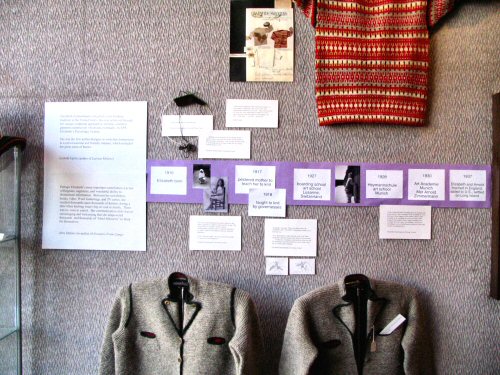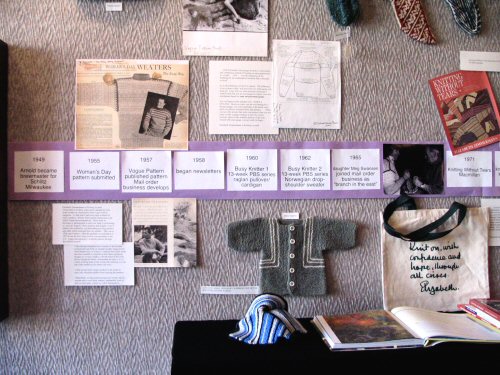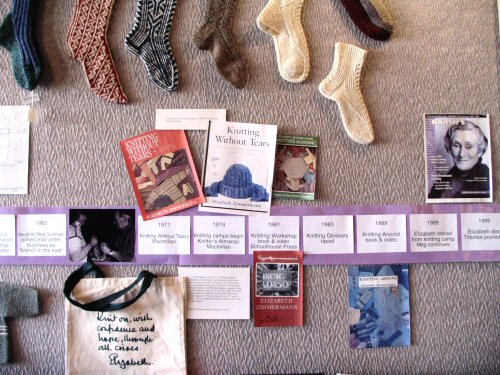| "Elizabeth Zimmermann, who brought a penetrating
intellect and a sculptor's sensitivity to revolutionizing the ancient art
of knitting, died Nov. 30 at a hospital in Marshfield, Wis., where she
lived. She was 89.
Mrs. Zimmermann's best-known gift to knitting was a mathematical formula for figuring the proportions of sweaters and other garments, depending on how many stitches per inch the knitter wanted to use. But her passion, expressed in magazine columns, in four books and at her knitting camp, the nation's first, was creating beauty. She gently urged knitters to challenge the limits of their imaginations. "She allowed people to be intuitive about their knitting, rather than just being blind followers of the written word," said Nancy J. Thomas, editor of Knitter's Magazine. "She had a way of being breezy and fun. She made everything seem easy." Linda Ligon, president of Interweave Press, which specializes in traditional textile crafts, said Mrs. Zimmermann "brought intelligence and validity to a craft that had been trivialized as women's work." Miss Lloyd-Jones attended art schools in Lausanne, Switzerland, and Munich, where she sold sweaters of her own design to a local shop for pocket money. She also met Arnold Zimmermann, a brewer. He had to flee Hitler's Germany because an SS agent overheard him making a snide remark about Hitler. They married in England, immigrated to New York and moved several times before settling in Wisconsin. Mrs. Zimmermann began spending morning after morning with local knitters, exchanging tips. She became frustrated with many of her friends' lockstep reliance on precise instructions in printed patterns. So, in 1955, she submitted her designs for Norwegian-pattern sweaters to Woman's Day magazine, resolving to use clear language. Other magazines also accepted her designs, and it 1959, she started her own knitting publication. About the same time, the family, with three children, moved into a derelict schoolhouse in the middle of the woods and remodeled it. She combined her newsletter with a mail-order business for knitting supplies, books and video productions under the name Schoolhouse Press. She was hostess of a knitting program shown on many public television stations and in 1974 began a knitting camp under the auspices of the University of Wisconsin.. The camp has continued every summer since. She also led workshops throughout the United States and in New Zealand. She was a woman who held to strong principles about her work, like never using any thread but wool. But she never criticized another knitter's use of other materials, including the dreaded polyester. She developed a reputation for giving pithy advice. But Mrs. Zimmermann's larger influence was in design, making sweaters and other garments in round tubes, rather than in flat pieces to be joined together. The result was a sculptural quality, said her daughter Meg Swansen, who is also a noted knitter and will carry on her mother's business. By contrast, Kaffe Fassett, a knitter whose work is often exhibited in art galleries, is known for his painterly approach, she said. But Ms. Ligon said sculptural effects were just the beginning .She said Mrs. Zimmermann's mathematical formula for constructing sweaters in the round freed knitters to concentrate on other creative concerns, like yarn and stitches. "She was more than a sculptor," Ms. Ligon said. "She was an engineer." Many knitters said the system opened up new possibilities to them. "She made me a thinking knitter," said Joyce Williams of Sparta, Wis., who attended three knitting camps with Mrs. Zimmermann. Mrs. Zimmermann chose to play down her influence on knitting, coining the term "unvention" for her woolly inventions. "The products of science and technology may be new, and some of them are quite horrid, but knitting?" she wrote in Knitter's Almanac. "In knitting there are ancient possibilities; the earth is enriched with the dust of millions of knitters who have held wool and needles since the beginning of sheep. New York Times, December 12, 1999
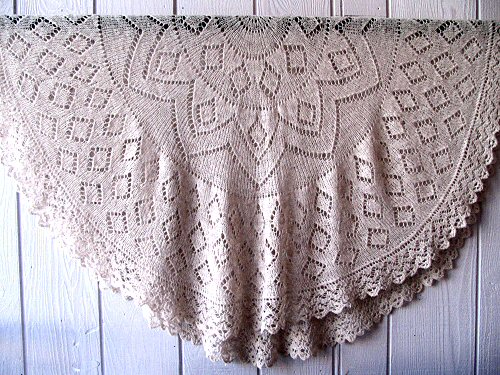 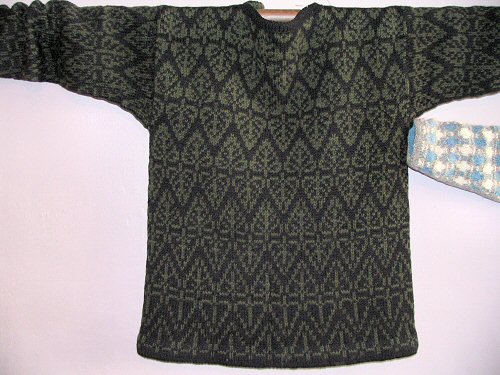 |
